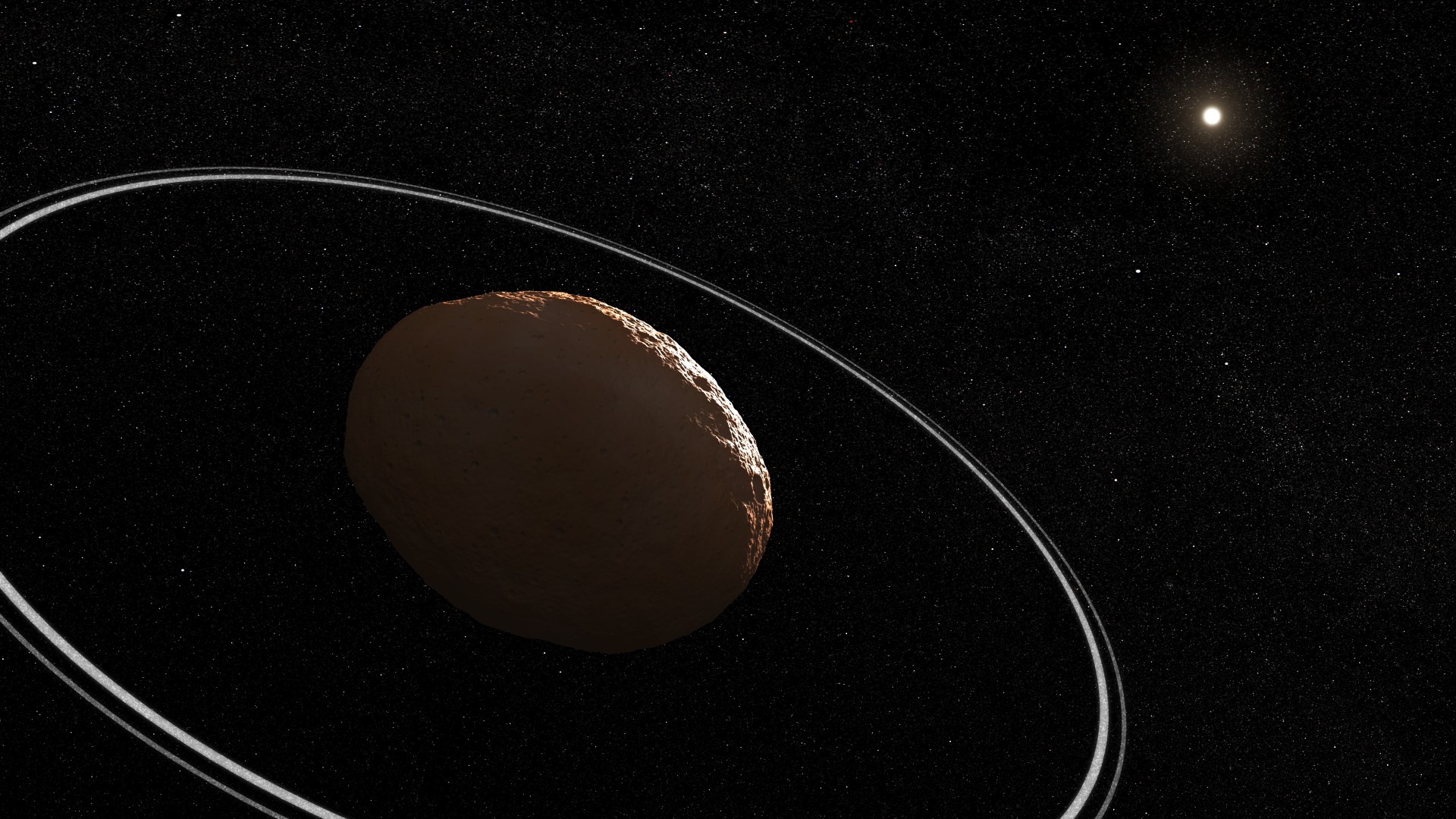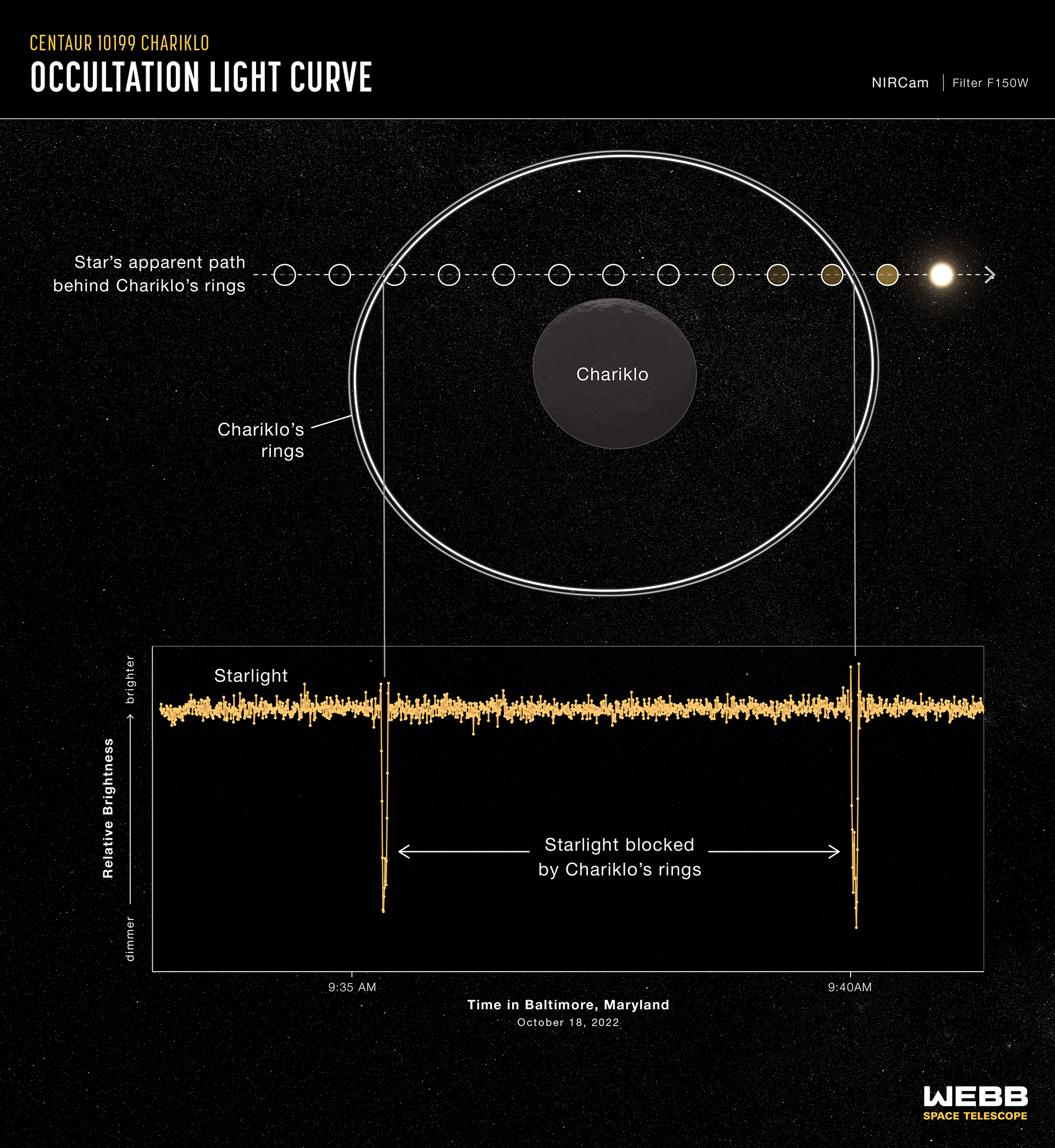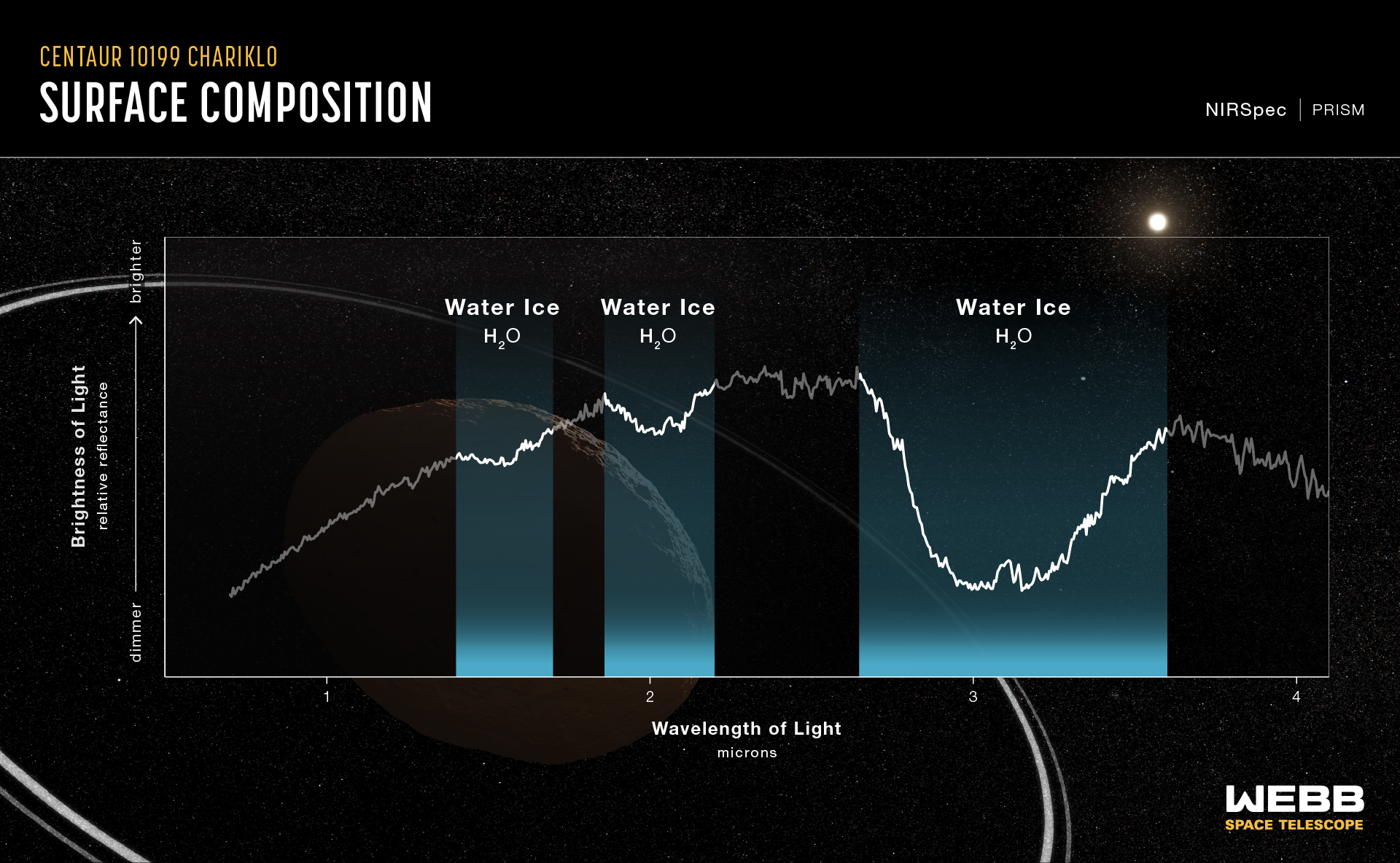James Webb Space Telescope discovers water ice at ringed asteroid Chariklo 'by remarkable luck'
The most comprehensive plans need a sprinkle of luck, even in space.
In October 2022, the James Webb Space Telescope (JWST or Webb) watched as Chariklo, a tiny ringed asteroid, eclipsed a star. This event, called an occultation, marked a first for Webb. At the month's end, Webb turned toward Chariklo again and notched another victory: For the first time, astronomers analyzing the telescope's data spotted clear signs of water ice, the presence of which was only hinted at until now. These observations will guide astronomers to better understand the nature and behavior of tiny bodies in the outer reaches of our solar system.
But the two feats almost did not happen.
Related: Asteroid Chariklo Has Rings: Images of a Space Rock Oddity (Gallery)

Although it is the largest of its kind, Chariklo is still too small and too far for even the mighty Webb to photograph directly. Instead, astronomers decided to study it through occultation, which is an indirect but powerful method to study small bodies like Chariklo. But the team did not know if and when a star — without which an occultation would not occur — would fall into Webb's field of view. This made Chariklo part of Webb's target of opportunity program: If the asteroid happened to cross in front of a star, the program would allow astronomers to temporarily interrupt the telescope's schedule to observe the event.
The team calculated only a 50% chance that Webb would spot a star bright enough with an interesting object like Chariklo crossing in front. After its launch in 2021, as Webb went through routine course corrections to hold it steady in its parking spot in space, the team continued predicting and revising its list of possible occultations. Late last year, astronomers ended up on the favorable side of that 50% when they discovered "by remarkable good luck" that Chariklo was on track to occult a star that also fell into Webb's view.
"This was the first stellar occultation attempted with Webb," the team wrote in a NASA statement published Wednesday (Jan. 25). "A lot of hard work went into identifying and refining the predictions for this unusual event."
Breaking space news, the latest updates on rocket launches, skywatching events and more!
On Oct. 18, 2022, Chariklo and its system of two rings crossed in front of a star. Using Webb's near-infrared camera (NIRCam), astronomers monitored the star's brightness for an hour. Resulting data showed two dips in the star's brightness as expected: When the asteroid's rings first hid the star as the eclipse began, and again when the last of its rings wrapped up the occultation.
"The shadows produced by Chariklo's rings were clearly detected," the team wrote in the statement, "demonstrating a new way of using Webb to explore solar system objects."
Read more: How the James Webb Space Telescope works in pictures
Objects like Chariklo are called centaurs, thanks to their hybrid nature. (Centaurs are mythological horse-human hybrids.) They look like asteroids but behave like comets — complete with visible tails. Their home, an unstable orbit between Jupiter and Neptune, hosts thousands of centaurs of varying shapes and sizes. As interesting as they are, their small size and vast distance make them difficult to study. The composition of even the biggest centaur, Chariklo — which is still tiny at just 160 miles (250 km) in diameter and distant at a whooping 2 billion miles (3.2 billion km) from us — is poorly understood. Also, past research hinted at water ice somewhere in Chariklo's system, but had yet to conclusively detect it.
In this latest research, astronomers pointed Webb at Chariklo again. This time, they used the telescope's Near-infrared Spectrograph (NIRSpec) instrument to measure the sunlight reflected by Chariklo and its two rings. The resulting spectrum showed three absorption bands of water ice, marking the first clear indication of crystalline ice.
The presence of crystalline ice likely indicates that Chariklo is subject to constant bombardment, according to Dean Hines, an astronomer at the Space Telescope Science Institute in Maryland. "Because high-energy particles transform ice from crystalline into amorphous states, detection of crystalline ice indicates that the Chariklo system experiences continuous micro-collisions that either expose pristine material or trigger crystallization processes," Hines said in NASA's statement.
Read more: Centaurs Rising: NASA Eyes Missions to Weird Asteroid-Comet Hybrids
Astronomers have gotten one step closer to studying the Chariklo system, but there is still much that remains unknown about the centaur. The spectrum analyzed in the latest research includes information about the system as a whole, but at the moment, it is difficult to distinguish the data between Chariklo and its two rings.
For example, although astronomers spotted the first clear signs for crystalline water ice, they do not yet know for sure where in the asteroid's system the ice is present. In the coming months, researchers hope to use Webb's high sensitivity to dig up individual features of Chariklo and its two rings, Pablo Santos-Sanz, an astronomer at the Instituto de Astrofísica de Andalucía in Spain who took part in this research, said in the statement.
"We hope [to] gain insight into why this small body even has rings at all, and perhaps detect new fainter rings," Santos-Sanz said.
Follow Sharmila Kuthunur on Twitter @Sharmilakg. Follow us @Spacedotcom, or on Facebook and Instagram.

Sharmila Kuthunur is an independent space journalist based in Bengaluru, India. Her work has also appeared in Scientific American, Science, Astronomy and Live Science, among other publications. She holds a master's degree in journalism from Northeastern University in Boston.


